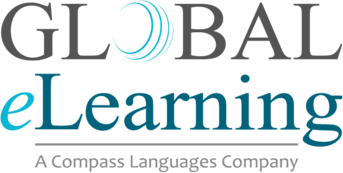Continuous Learning in Life-Sustaining Settings
At the international Global eLearning Conference, Pete Sandford of NXLevel Solutions reviewed how to create continuous learning programs in life sustaining settings. Pete described how his organization focuses on training and continuous learning for sales teams in the pharmaceutical and life sciences spaces. In this field, compliance and clinical concerns are a critical part of training initiatives. In this article, we recap the highlights from Pete’s presentation.
Continuous Learning with Lasting Results
Thinking big picture, we have to remember that ongoing or continuous learning brings far better results, long-term. This approach is in contrast to initial orientations or one-time training initiatives and may include several learning modes, such as eLearning, microlearning, workshops, and supporting materials. The ultimate goal with continuous learning is to enhance knowledge retention and improve performance.
Learning and Sustainment Challenges
In today’s learning environment, both trainers and learners alike face many challenges. For the healthcare industry, in particular, the end goal is to improve a patient’s health, but the end-user is not the person actually receiving the training. Rather, in many cases, the goal is to educate the healthcare professionals, pharmaceutical reps, etc. so that they can, in turn, make appropriate recommendations to the providers or end users. Here are a few of the challenges often confronted in these settings:
- This industry is highly regulated
- The landscape is ever-evolving
- Customers often know more than the person selling to them
- The existing unrealistic balance between job responsibilities and training time
- The value of training is often understated
- The ever-present challenge of the “forgetting curve” in adult learners
These challenges are often compounded by the standard practice of issuing a one-time training format, which shows an immediate drop-off in retention following the training. This is where continuous learning can change the game entirely, in regards to training health care professionals.
Tactics to Address the Learning Challenges
To address the challenges of the healthcare industries specifically, Pete discussed some of the tactics that can be used to address learning challenges. This information can also be applicable in any industry where the learning environment is fluid or rapidly changing such as financial industries, manufacturing, or other industries that must meet certain legal or compliance requirements. These suggestions include:
Self-Study Learning
- Focus on Specific Learning Objectives
- Lessons Must be Relevant and Engaging
- The Shorter, the Better – Avoid Overload
Collaborative Learning Environments
- Use a Blended Learning Approach
- Change Methods from In-Person to Virtual Learning
- Make Use of Breakout Rooms
- Shift Curriculum Strategies
Tools for Sustainment and Reinforcement (Support for the Forgetting Curve)
- Quick Reference Guides (QRGs)
- Key Fact Cards with Reference Material
- Podcasts
- Annotated Documents
- Competition and Comparison Guides
- Infographics and Job Aids
Communications
- Critical to Make Sure That Learners Understand
- Benefit – What’s In It For Them?
- Use of Videos, Templates, Posters, and PDFs
- When to Learn and the Overall Benefit
Effective Continuous Learning Strategies
Continuous learning is an effective learning strategy with a multi-layered approach over a more extended time. The use of learning campaigns, using spaced repetition throughout a specific period is also helpful. Knowledge Assessments can be particularly helpful with retention and application of the learning content. After the assessment, learners are assigned microlessons to fill in knowledge gaps.
Below is a list of best practices to review and apply to your own learning and training activities:
- Plan a Multi-Asset Learning Strategy
- Design Your Learning So That it Resets the Forgetting Curve
- Use Multiple Delivery Formats
- Communicate Often and Clearly to Both the Learning Audience and Stakeholders
- Make Sure Training Assets are Accessible and Mobile-Friendly
Above all, demonstrate that you value your learners’ time. Ensure that training can easily integrate with their busy schedule easily, and your success rate will climb.
To view the LIVE VIDEO from the international Global eLearning Conference, visit our YouTube channel. You’ll see this panel discussion and other highlights from this international event.
Global eLearning was the host and exclusive sponsor for this event. Global eLearning provides translation and localization services to meet the unique needs of the Learning & Development industry. For more information about Global eLearning, click here.


